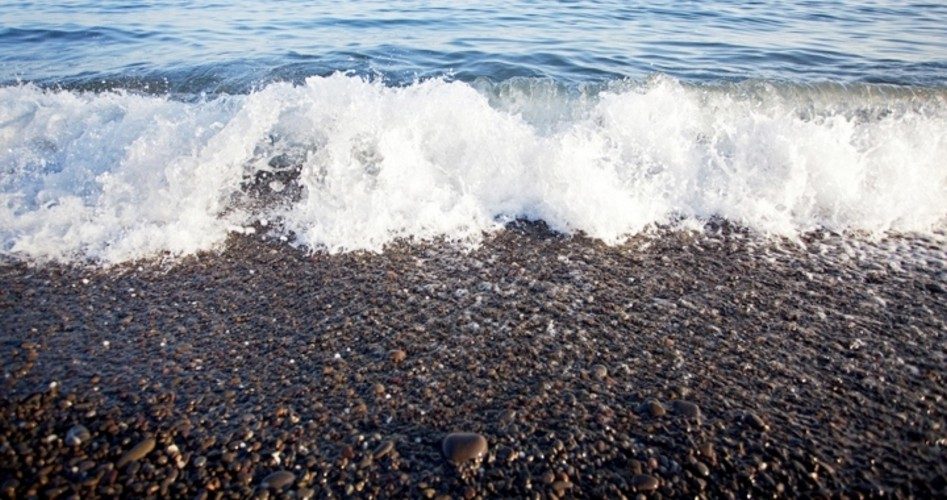
If climate change theorists want to blame man for warming conditions at Earth’s north and south poles, they may need to start blaming the man in the Moon. Long-term lunar cycles may have more to do with such climate changes due to their effect on tidal patterns than has previously been generally understood.
A recent post to the Terraforming Terra blog (“An 1800 Year Oceanic Tidal Cycle Driving Climate Change”) points to a peer-reviewed study published in 2000 for evidence of the Moon’s influence on climate change. The study, published in the Proceedings of the National Academy of Sciences, was written by Charles Keeling and Timothy Whorf of the Scripps Institution of Oceanography at UC-San Diego. According to the study’s abstract, an 1800-year tidal cycle may be a significant contributor to variations in ocean temperature:
Variations in solar irradiance are widely believed to explain climatic change on 20,000- to 100,000-year time-scales in accordance with the Milankovitch theory of the ice ages, but there is no conclusive evidence that variable irradiance can be the cause of abrupt fluctuations in climate on time-scales as short as 1,000 years. We propose that such abrupt millennial changes, seen in ice and sedimentary core records, were produced in part by well characterized, almost periodic variations in the strength of the global oceanic tide-raising forces caused by resonances in the periodic motions of the earth and moon. A well defined 1,800-year tidal cycle is associated with gradually shifting lunar declination from one episode of maximum tidal forcing on the centennial time-scale to the next. An amplitude modulation of this cycle occurs with an average period of about 5,000 years, associated with gradually shifting separation-intervals between perihelion and syzygy at maxima of the 1,800-year cycle. We propose that strong tidal forcing causes cooling at the sea surface by increasing vertical mixing in the oceans. On the millennial time-scale, this tidal hypothesis is supported by findings, from sedimentary records of ice-rafting debris, that ocean waters cooled close to the times predicted for strong tidal forcing.
As Keeling was among the first credible scientists to suggest a possible human component to global warming, it is difficult to dismiss the significance of the 2000 study as the work of a “climate change denier” — his work monitoring atmospheric carbon dioxide was rewarded with a White House ceremony in 1997 in which the man who would make a career out of the global warming hype — Vice President Al Gore — presented Keeling with a “special achievement award.” Two years after the lunar study was published, Keeling was at the White House once again — this time to receive the Medal of Science from President George W. Bush. However, the conclusion of the Keeling/Whorf study is devastating to the notion that human activity is the driving force behind climate change.
The study concludes with the following observations:
The 1,800-year tidal cycle would be recognized as a principal driver of climate change in the Holocene, causing shifts in climate more prominent and extensive than hitherto realized. The Little Ice Age would be seen to be only a lesser cooling episode in a series of such episodes. Viewed today as of ‘‘possibly global significance,’’ it would probably be confirmed as such, being linked to global tidal forcing. Other major climatic events since the glacial period, such as drought near the time of collapse of the Akkadian empire, might also be found to be linked to a global process.
Looking ahead, a prediction of ‘‘pronounced global warming’’ over the next few decades by Broecker, presumed to be triggered by the warm phase of an 80-year climatic cycle of unidentified origin, would be reinterpreted as the continuation of natural warming in roughly centennial increments that began at the end of the Little Ice Age, and will continue in spurts for several hundred years. Even without further warming brought about by increasing concentrations of greenhouse gases, this natural warming at its greatest intensity would be expected to exceed any that has occurred since the first millennium of the Christian era, as the 1,800-year tidal cycle progresses from climactic cooling during the 15th century to the next such episode in the 32nd century.
In other words, at most, human activity could only contribute to a natural process that is already underway — and which will transpire regardless of human existence creating “greenhouse gases” as an inevitable side effect of our existence. In fact, a recent study led by Celia Sapart, an atmospheric chemist at Utrecht University in the Netherlands, has concluded that modern levels of greenhouse gases are significantly lower than they were in man’s distant past. An October 3 article for the Los Angeles Times summarizes the results of the study: Centuries before the Industrial Revolution or the recognition of global warming, the ancient Roman and Chinese empires were already producing powerful greenhouse gases through their daily toil, according to a new study. The burning of plant matter to cook food, clear cropland and process metals released millions of tons of methane gas into the atmosphere each year during several periods of pre-industrial history, according to the study, published October 4 in the journal Nature.… “The quantities are much smaller, because there were fewer people on Earth,” said study leader Celia Sapart, an atmospheric chemist at Utrecht University in the Netherlands. “But the amount of methane emitted per person was significant.”
Sapart’s conclusions were based on an analysis of ice core samples from Greenland. The layered ice columns, which date back 2,000 years, contain tiny air bubbles from different periods of history, and provide scientists with a view into the atmosphere’s changing chemistry.…
“The results show that between 100 BC and AD 1600, human activity may have been responsible for roughly 20-30% of the total pyrogenic methane emissions,” the authors wrote. Living beings naturally produce biogenic methane — the search for methane produced by living organisms is one of the key elements of the scientific study being conducted using NASA Curiosity rover on the surface of Mars. Human activity — even on the technological level of cooking fires — produce pyrogenic methane. To eliminate the human contribution to greenhouse gases would require the elimination of the species. Since most global warming activists seem unwilling to pursue their crusade against climate change to such an extreme end, the result of economically-crippling “carbon taxes” could be close to nil, given the evidence that the fundamental forces behind any actual, measurable climate change may rest in such an immutable force as the tide.
Photo: Sea wave rolls on coast of small pebbles via Shutterstock



